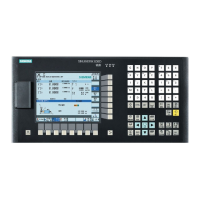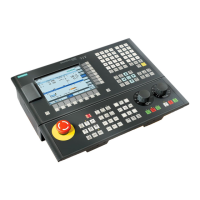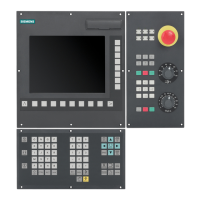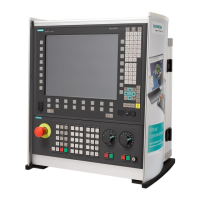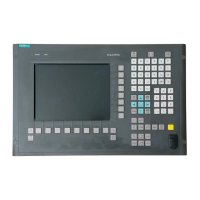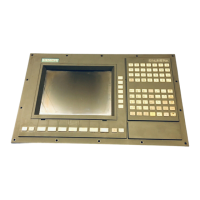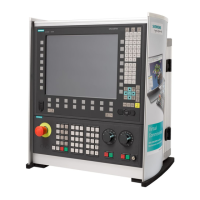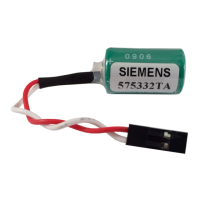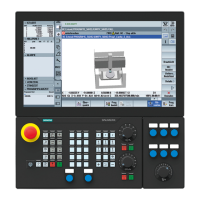Parameter Manual
Operating Instructions, 08/2013, 6FC5397-8EP40-0BA0
417
Detailed descriptions of interface signals
4.8 Axis / spindle-specific signals
Signal state 0 The speed actual value is higher than the threshold speed.
Note for the reader Commissioning Manual, Turning and Milling
DB390x
DBX4002.6
n
act
= n
set
Signal(s) to drive (NCK → PLC)
Edge evaluation: No Signal(s) updated: Cyclic
Signal state 1 The PLC is signaled that after a new speed setpoint input, the speed actual
value has reached the speed tolerance bandwidth and has remained within
this tolerance bandwidth for the specified time.
If the actual speed value then leaves the tolerance band, then contrary to
the "Ramp-up completed" signal, the interface signal "n
act
= n
set
" is set to 0.
Signal state 0 The conditions described above have not yet been fulfilled. The speed
actual value is outside the speed tolerance bandwidth.
corresponding to ... DB390x DBX4002.2 (ramp-up completed)
Note for the reader Commissioning Manual, Turning and Milling
DB390x
DBX4002.7
Variable signaling function
Signal(s) to drive (NCK → PLC)
Edge evaluation: No Signal(s) updated: Cyclic
Signal state 1 The drive signals to the PLC that the threshold value of the quantity to be
monitored has been exceeded. Using the variable signaling function, it is
possible to monitor for any axis any quantity from the drive, which can be
parameterized, to check if it violates a certain threshold, which can then be
signaled as interface signal to the PLC.
Monitoring:
The parameterized variable is monitored to check whether it exceeds a
defined threshold. In addition, a tolerance band (hysteresis) can be defined
which is considered when scanning for violation of the threshold value.
Further, the "threshold value exceeded" signal can be logically combined
with a pull-in and drop-out delay time.
Selection:
The quantity to be monitored can be selected by entering a signal number
or by entering a symbolic address.
Signal state 0 The drive signals the PLC that the threshold value of the quantity to be
monitored has not been exceeded or the specified conditions are not
fulfilled.
If the variable signaling function is disabled the signal state "0" is output to
the PLC.
Application With the variable signaling function the machine tool manufacturer can
monitor one additional threshold value for specific applications for each axis
/ spindle and evaluate the result in the PLC user program.
Example:
The interface signal "Variable signaling function" should be set to 1 when
the motor torque exceeds 50% of the rated torque.
Note for the reader Commissioning Manual, Turning and Milling
Siemens Controls
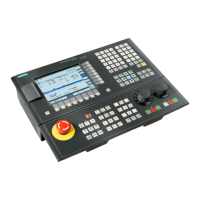
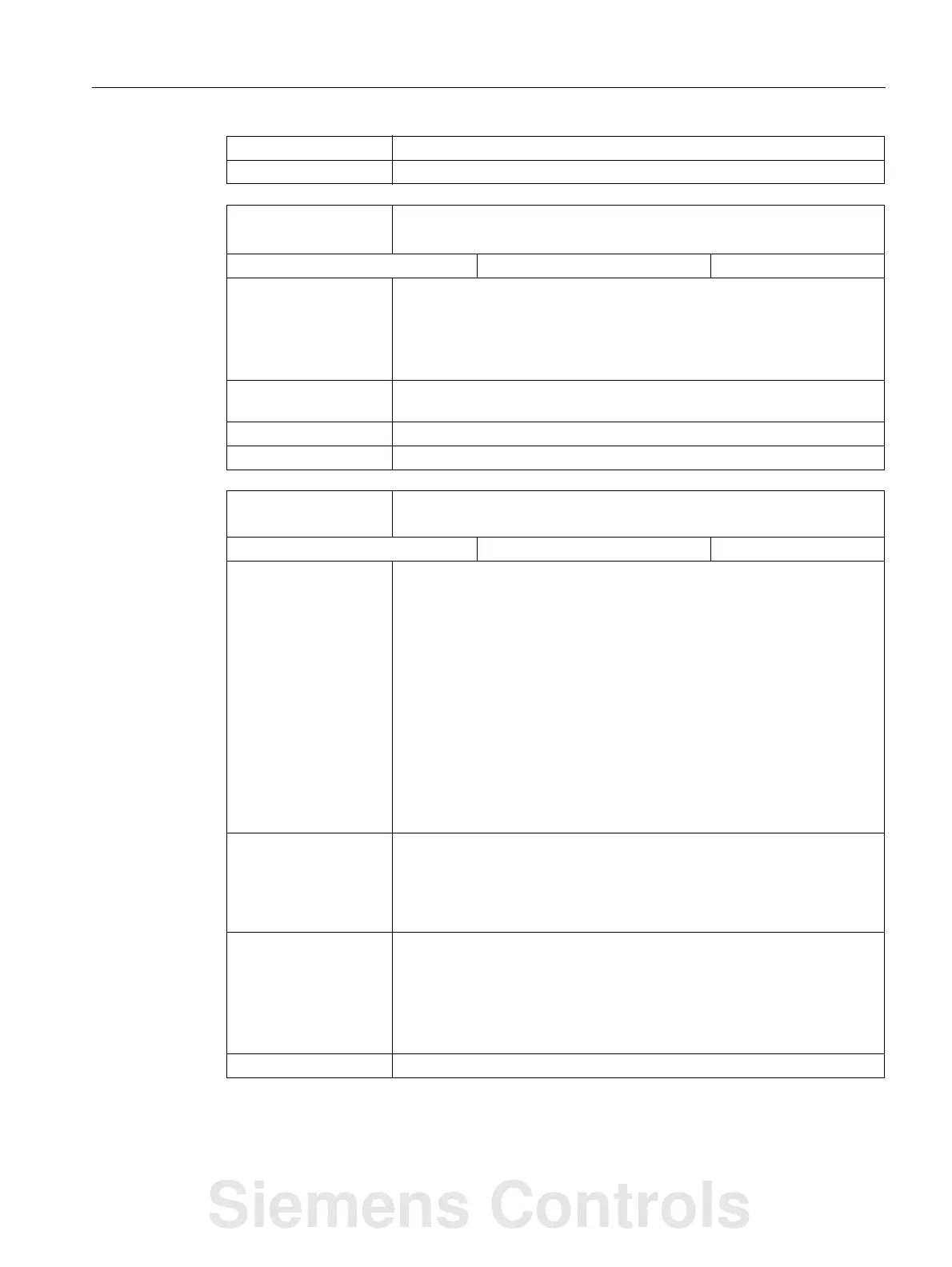